Exploring the Weep
Exploring the Weep
On Saturday, D. and I accompanied a group led by Microbiologist Wayne to visit a place known as the Weep. The Weep is a shallow persistent pond fed by seepage, situated in a sunken hollow between a railroad grade and a salt pond levee on the edge of the Don Edwards San Francisco Bay National Wildlife Refuge in Alviso. Over the course of a year, the Weep undergoes very wide swings in salinity. The result is a uniquely rich microbial community of microbes such as cyanobacteria, archaebacteria, diatoms, dinoflagellates and protozoa whose populations rise and fall as conditions shift.
Before Europeans arrived here, the area was a complex habitat of marshes and mud flats. Now it is a controlled waterscape of salt ponds and levees. Rain, runoff and seepage from salt ponds and fresh tidal flow from the Bay all interact to shape the Weep's life cycles. Its salinity ranges from brackish to 10 times saltier than seawater. Strong winds and hot sun, elements that make it ideal for evaporative salt ponds, also influence the landscape.
The ecology of places like this is critical for all of us, because the cyanobacteria that live here create the oxygen we breathe. The greatest concentrated weight of oxygen producers is found in wetlands, particularly in the salt marsh.
Various species of cyanobacteria are the most common organism and make up the greatest biological mass. Oscillatoria is one of the most abundant of cyanobacteria and is found in most pond mats in San Francisco Bay. Chlorococcus belongs to a group of cyanobacteria that includes Prochlorococcus, by biomass the world's most plentiful organism. Every fifth breath you take contains oxygen produced by Prochlorococcus. The alga Codium is also present.
Such places have a barren look to them, but the visible life is only about 1/1000 of what's actually there. Here are some pics I took, mostly of the higher life forms.
The Amtrak train comes through the marsh, mere yards from the levee.
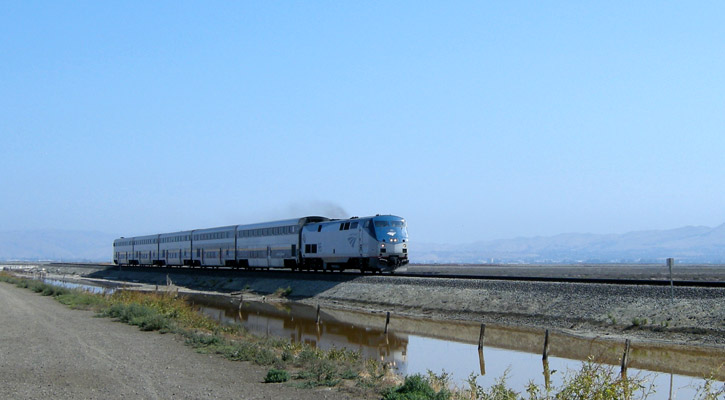
Gulls on a salt pond A13, on the west side of the levee.
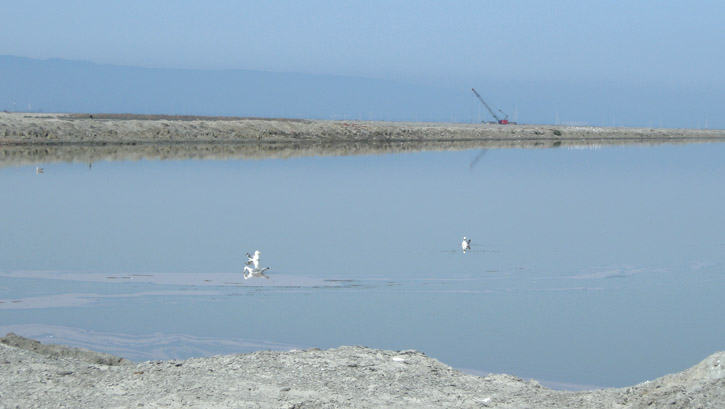
The view to the north of the Weep.
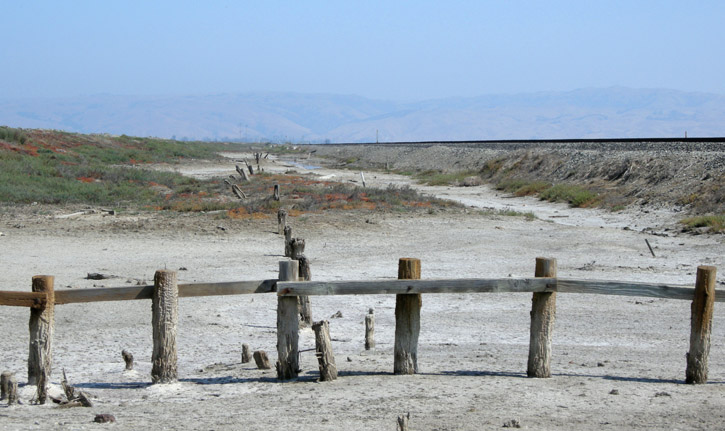
It's difficult to tell water from sky.
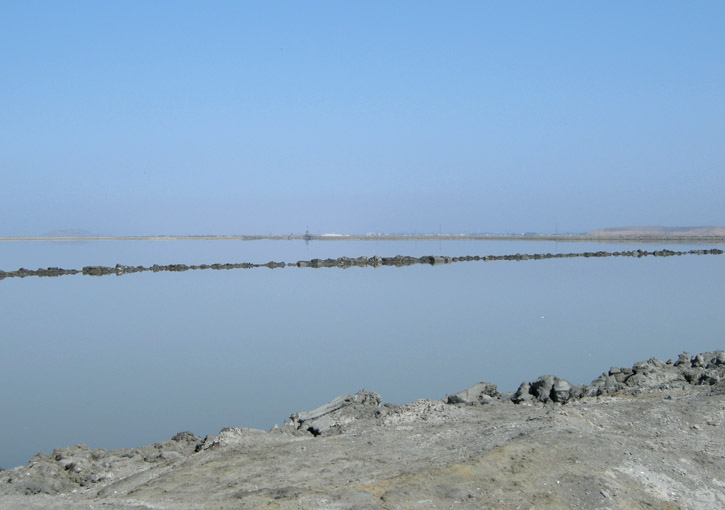
A cluster of wooden stakes bristles out of the sand, enigmatic artifacts left behind from an earlier age of salt harvesting.
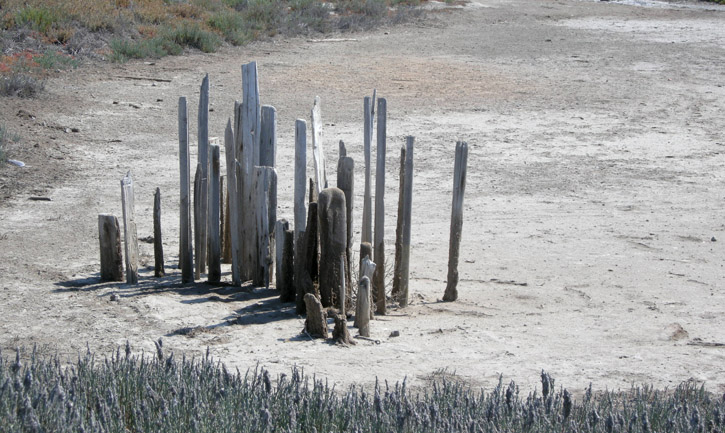
We arrive at the Weep.
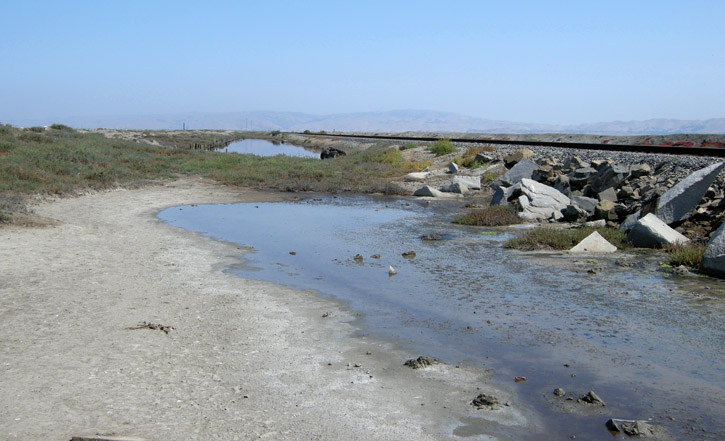
It is only about one inch deep but does not evaporate, due to water seeping in from under the levees on either side.
Our group.

Salt flies swarm over the surface.
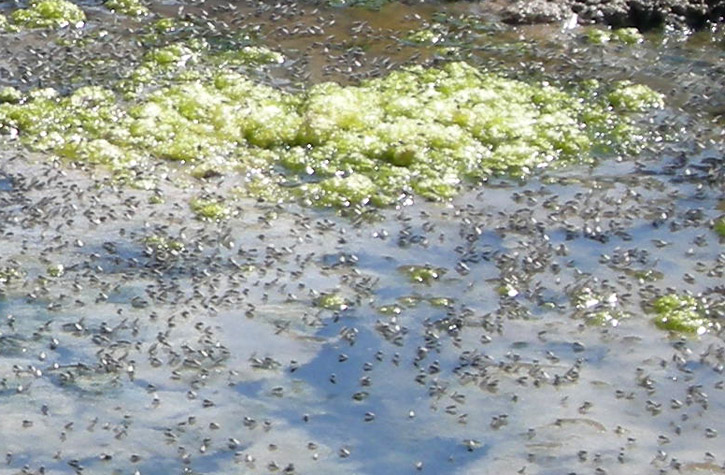
In some areas, the salinity of the Weep is twice that of ocean water.
The sparkly world of salt flies on the water's surface.

We set up the field microscopes on their tripods to view the microorganisms we will be collecting from the Weep.
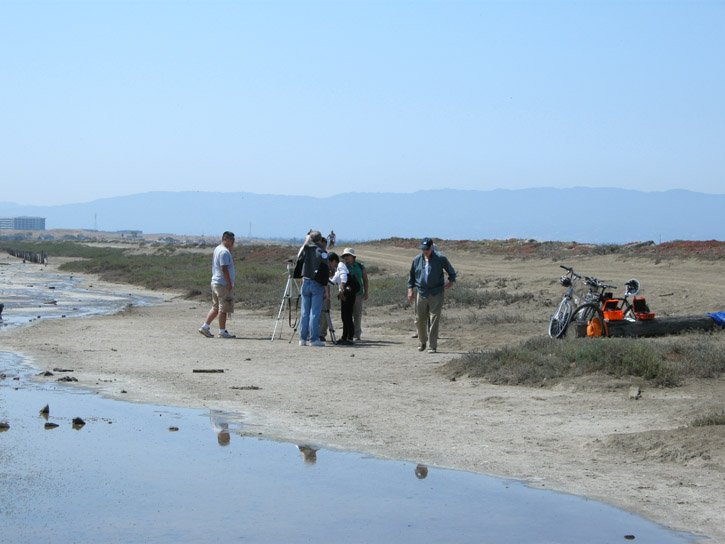
The remains of a bird, probably a tern, on the edge of the Weep.
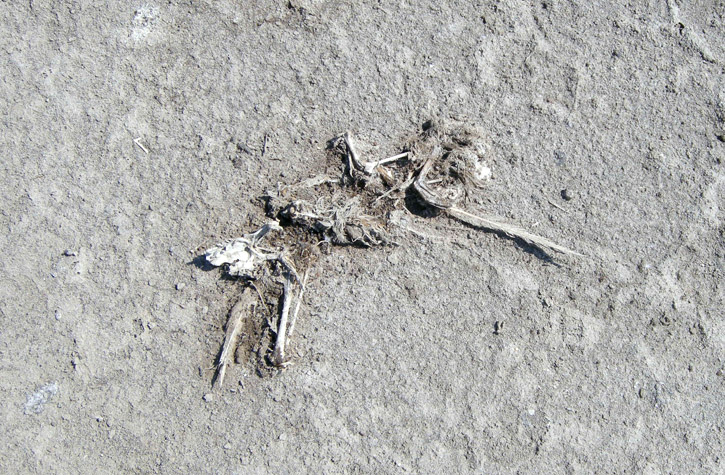
The view to the north.
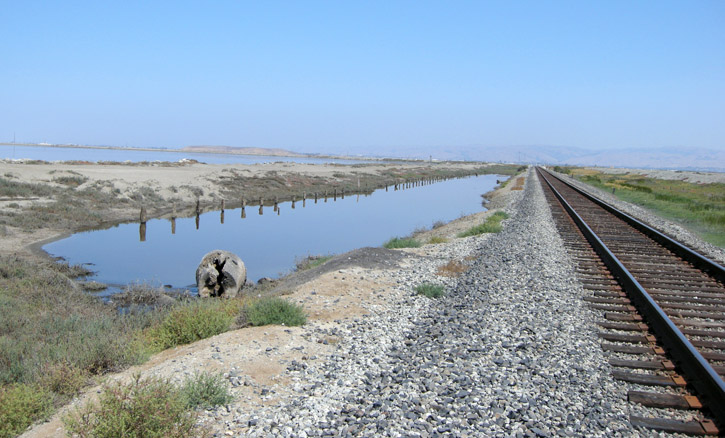
Bright green cyanobacteria produce oxygen. Black soil indicates the presence of iron and microorganisms that produce hydrogen sulfide.
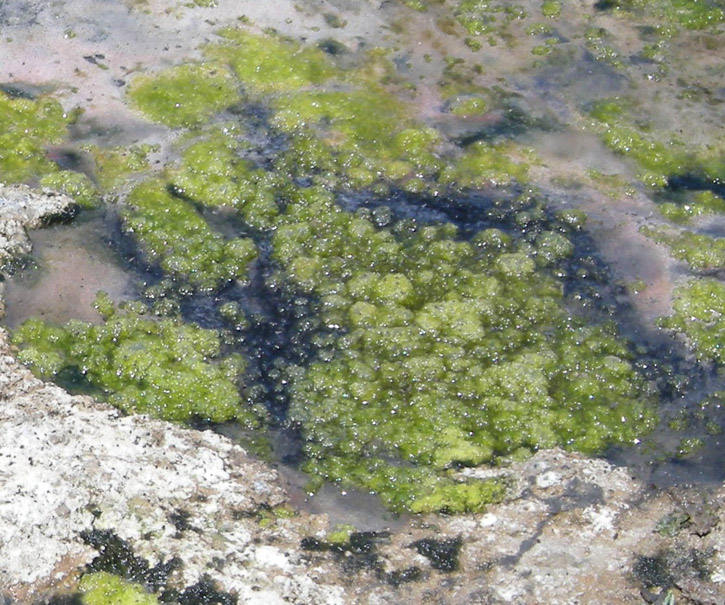
A gull sits on salt pond A13 across the trail from the Weep.
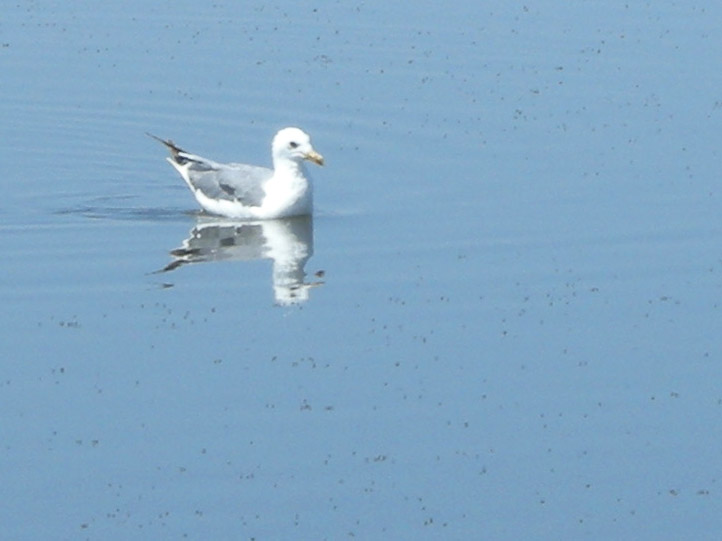
A rill running from the railroad tracks into the Weep, full of microorganisms.
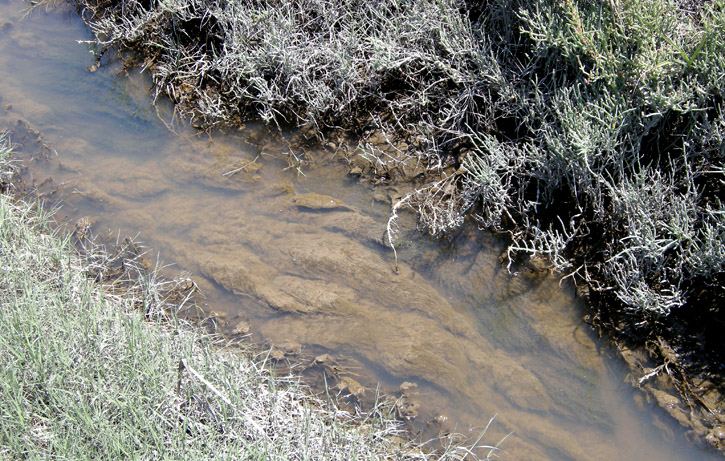
Some of the gunk from the rill.
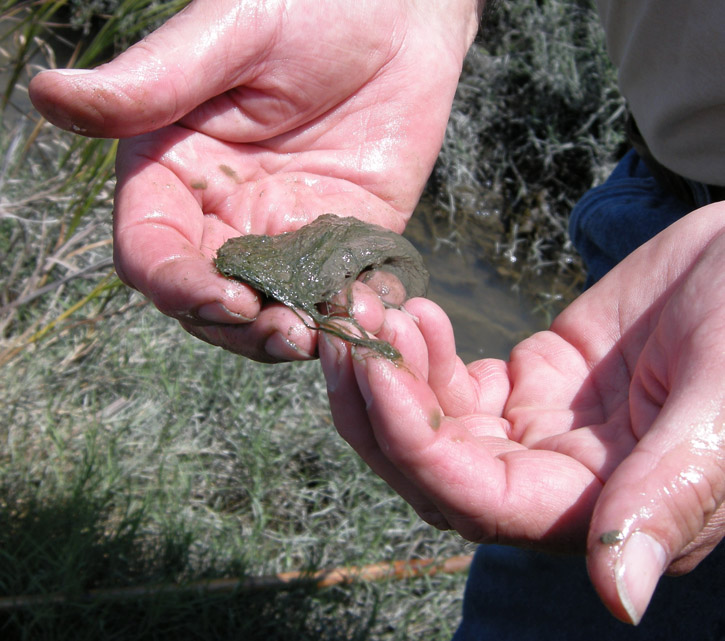
It looks soft and squishy, but it's actually fairly tough.
Looking east over the marshes toward the Diablo Range.
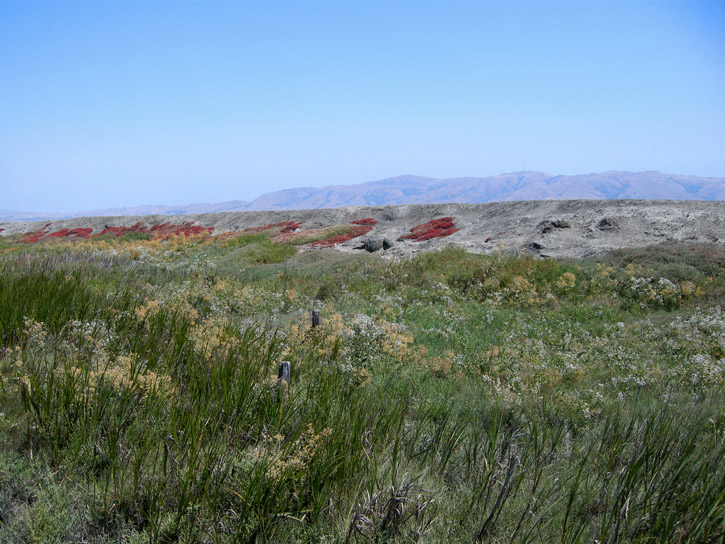
Salt scum on salt pond A13.
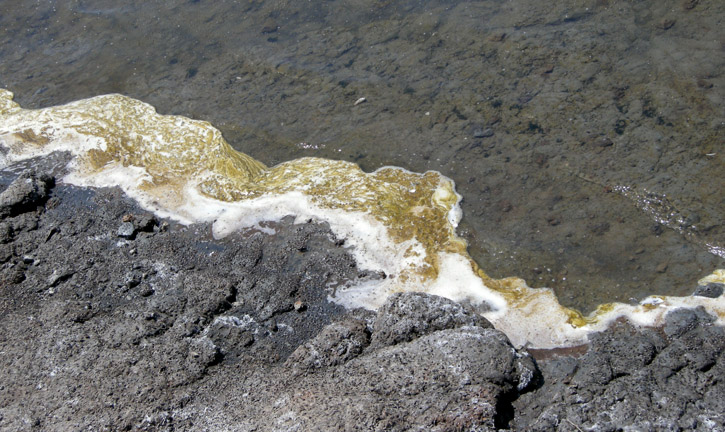
This pond is red due to the presence of Dunaliella salina, a type of halophilic micro-algae especially fond of the highly saline conditions in salt ponds.
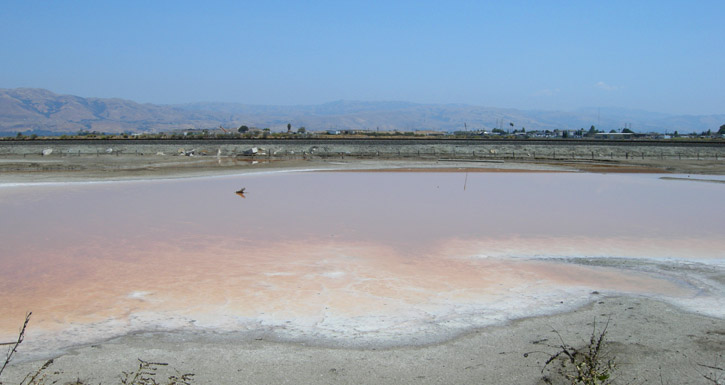
To survive, these organisms have high concentrations of beta-carotene to protect against the intense light, lending them their startling color. The deepr the color, the more saturated the pond.
.
On Saturday, D. and I accompanied a group led by Microbiologist Wayne to visit a place known as the Weep. The Weep is a shallow persistent pond fed by seepage, situated in a sunken hollow between a railroad grade and a salt pond levee on the edge of the Don Edwards San Francisco Bay National Wildlife Refuge in Alviso. Over the course of a year, the Weep undergoes very wide swings in salinity. The result is a uniquely rich microbial community of microbes such as cyanobacteria, archaebacteria, diatoms, dinoflagellates and protozoa whose populations rise and fall as conditions shift.
Before Europeans arrived here, the area was a complex habitat of marshes and mud flats. Now it is a controlled waterscape of salt ponds and levees. Rain, runoff and seepage from salt ponds and fresh tidal flow from the Bay all interact to shape the Weep's life cycles. Its salinity ranges from brackish to 10 times saltier than seawater. Strong winds and hot sun, elements that make it ideal for evaporative salt ponds, also influence the landscape.
The ecology of places like this is critical for all of us, because the cyanobacteria that live here create the oxygen we breathe. The greatest concentrated weight of oxygen producers is found in wetlands, particularly in the salt marsh.
Various species of cyanobacteria are the most common organism and make up the greatest biological mass. Oscillatoria is one of the most abundant of cyanobacteria and is found in most pond mats in San Francisco Bay. Chlorococcus belongs to a group of cyanobacteria that includes Prochlorococcus, by biomass the world's most plentiful organism. Every fifth breath you take contains oxygen produced by Prochlorococcus. The alga Codium is also present.
Such places have a barren look to them, but the visible life is only about 1/1000 of what's actually there. Here are some pics I took, mostly of the higher life forms.
The Amtrak train comes through the marsh, mere yards from the levee.

Gulls on a salt pond A13, on the west side of the levee.

The view to the north of the Weep.

It's difficult to tell water from sky.

A cluster of wooden stakes bristles out of the sand, enigmatic artifacts left behind from an earlier age of salt harvesting.

We arrive at the Weep.

It is only about one inch deep but does not evaporate, due to water seeping in from under the levees on either side.
Our group.

Salt flies swarm over the surface.

In some areas, the salinity of the Weep is twice that of ocean water.
The sparkly world of salt flies on the water's surface.

We set up the field microscopes on their tripods to view the microorganisms we will be collecting from the Weep.

The remains of a bird, probably a tern, on the edge of the Weep.

The view to the north.

Bright green cyanobacteria produce oxygen. Black soil indicates the presence of iron and microorganisms that produce hydrogen sulfide.

A gull sits on salt pond A13 across the trail from the Weep.

A rill running from the railroad tracks into the Weep, full of microorganisms.

Some of the gunk from the rill.

It looks soft and squishy, but it's actually fairly tough.
Looking east over the marshes toward the Diablo Range.

Salt scum on salt pond A13.

This pond is red due to the presence of Dunaliella salina, a type of halophilic micro-algae especially fond of the highly saline conditions in salt ponds.

To survive, these organisms have high concentrations of beta-carotene to protect against the intense light, lending them their startling color. The deepr the color, the more saturated the pond.
.